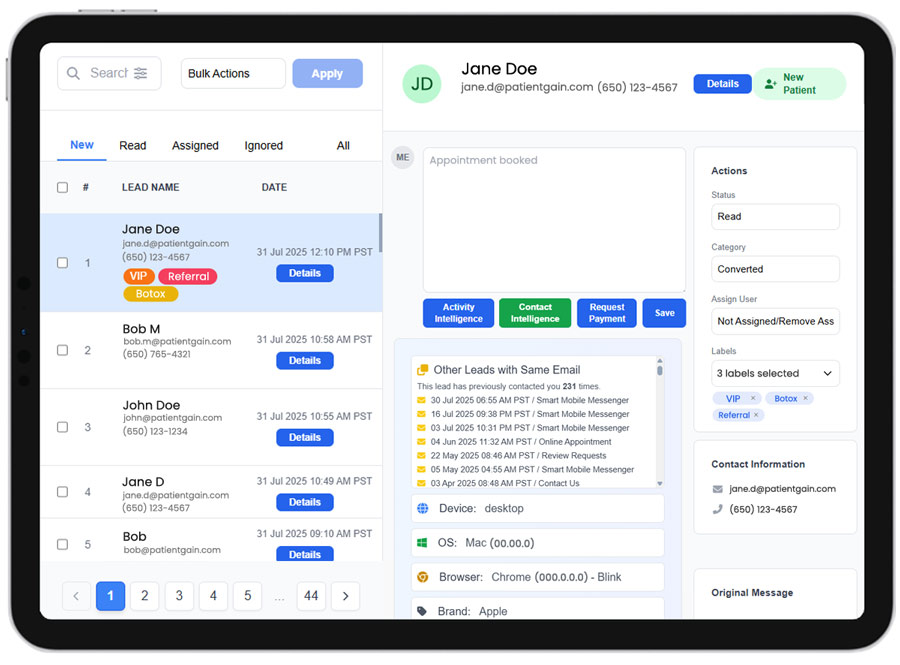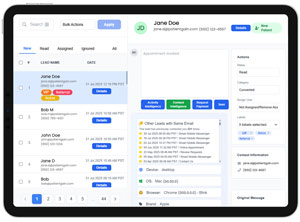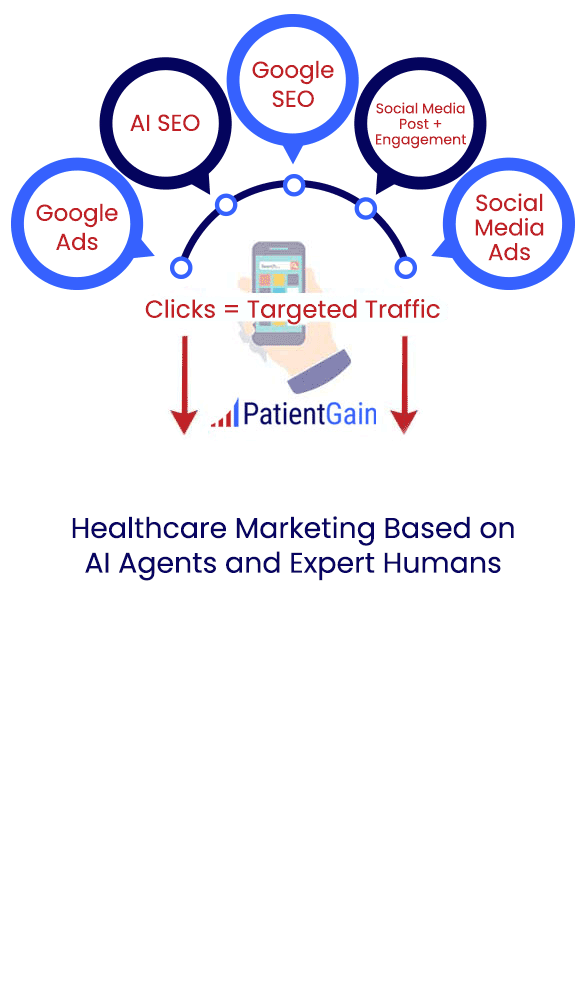What the Difference Between an EMR and CRM for a Medical Practice?
An EMR (Electronic Medical Record) system manages a patient’s clinical and medical data, such as medical history, diagnoses, and treatment plans, while a CRM (Customer Relationship Management) system focuses on managing the relationship between the patient and the practice by handling marketing, communication, and patient acquisition and retention efforts. In essence, EMRs are for clinical care, whereas CRMs are for new patient acquisition and patient engagement. Just think where do you save information about patients who are interested in your services, but they are not ready to become a paying patient yet? spreadsheets? referral post-it?
Example of a CRM for a medical and dental practice. In the image below, you can see that this a a “lead capture” and “conversion funnel” for a practice.


Difference between an EMR and a CRM for a medical practice, and how each serves distinct but complementary purposes:
1. EMR (Electronic Medical Record)
Purpose:
An EMR is designed to store, organize, and manage patient medical information. It is primarily clinical-focused, helping healthcare providers deliver care efficiently and safely.
Key Features:
- Patient medical history, diagnoses, and treatment plans
- Lab results, imaging, and medication records
- Clinical notes and progress tracking
- Integration with other healthcare systems for prescriptions, billing, and referrals
- HIPAA-compliant storage of sensitive health information
Example Use Case:
A primary care physician sees a patient for a chronic condition. The EMR allows them to quickly access previous lab results, medications, and visit notes to make informed treatment decisions.
Focus: Clinical care and patient health management.
2. CRM (Customer/Patient Relationship Management)
Purpose:
A CRM is designed to manage interactions and relationships with patients, focusing on engagement, marketing, and retention rather than clinical care.
Key Features:
- Patient contact information and lead origination information
- Communication tracking via emails, text messages, and phone calls
- Marketing automation for promotions, appointment reminders, and follow-ups
- Lead management for new patient acquisition
- Analytics for measuring patient engagement, conversion rates, and retention
Example Use Case:
A dental practice wants to increase patient acquisition. The current website is very attractive, and a marketing company is spending $2000 per month on Google and Meta ads for acquiring Invisalign patients. The practice is a also paying $800 per month for an SEO specialist. However there is no effective way to see the results of these marketing efforts. Solution: This practice uses PatientGain’s AI Connect app to see the real time interactions from perspective patients and hence improves number of new patients.
Focus: Patient engagement, marketing, and practice growth.
3. Key Differences at a Glance
| Feature / Function | EMR | CRM |
|---|---|---|
| Primary Goal | Manage patient health records | Manage patient relationships and marketing |
| Focus | Clinical care | Engagement, retention, and conversions |
| Data Stored | Medical history, medications, labs | Contact info, communications, appointment history |
| Users | Physicians, nurses, clinical staff | Marketing team, front office, practice managers |
| Examples | Epic, Cerner, Athenahealth | PatientGain, Solutionreach, Updox |
| Compliance | HIPAA-compliant | HIPAA-compliant (for patient communications) |
4. Why Both Matter
Most modern medical practices use both an EMR and a CRM:
- The EMR ensures safe, accurate, and accessible clinical care.
- The CRM ensures patients are engaged, informed, and returning, helping the practice grow.
Example Combined Workflow:
- A patient books an appointment online (CRM records the lead).
- The appointment details and patient health history are synced with the EMR for the physician.
- After the visit, the CRM sends a follow-up email or survey, boosting engagement and retention.

